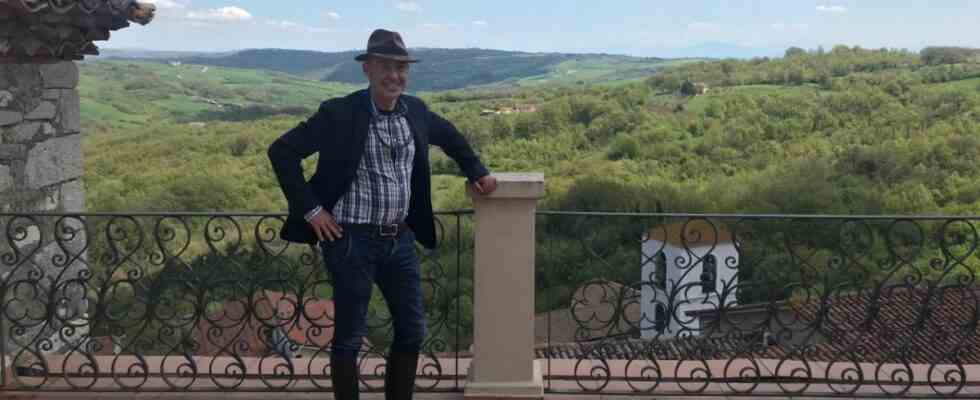He looks like Indiana Jones, says the hiking guide in the Campanian Taburno-Camposauro Nature Park to Enrico de Agostini. He laughs politely. And trudges through the beech forest, once the hunting ground of the Bourbon Duke Charles III, in jeans, leather boots and with Emily, the black Strubbel dog. The Italian Consul General from Munich has often heard the comparison with the adventure archaeologist from the films. That’s because of the hats, his trademark. And it’s often because he picks up old tracks, leafs through faded writing and rummages through dark walls. Would he have liked to become an archaeologist himself? “That’s obvious when you grow up in an area where so many historical treasures are being unearthed everywhere,” says de Agostini.
He spent his childhood in Rome, but spent two or three months every year in the cool green hills 60 kilometers from Naples to the de Agostini family estate, the Campolattaro Castle. In this fortress with a Norman tower from the 11th century and a trappeto in the former stables, a 400-year-old oil mill, de Agostini still has an apartment. You can tell how much he likes being here, how he greets the neighbors, how he looks at the picture of Crown Prince Umberto’s visit in 1933, the black-and-white photograph of his father, a painter, the old village chronicles, which he rummages through for stories. Campolattaro is his homeland.
Enrico de Agostini in his study in the old family residence, the Castle of Campolattaro.
(Photo: Michael Zirnstein)
The consul is at home in the world. Currently in Munich, where he likes to fly fish in the Isar – like at home in the Tammaro river. The diplomatic service has taken him to the United Arab Emirates, Ghana, Mozambique, Dortmund and as ambassador to Zimbabwe. His son was born in Johannesburg and he had him baptized in the 17th-century chapel in the Castello. In the village of 1,000 people there are a number of apartments for sale, he says, it’s a good investment, everything is much cheaper than in Tuscany. He promotes the beauty of his country everywhere, especially for his home region of Sannio, which is neglected by tourists. At a picnic with a group of journalists in the ruins of Saepinum, he serves cheese, olives and the autochthonous Falanghina wine and explains how he often invited guests to Zimbabwe for specialties and stories from his country – “otherwise no ambassador would cook for 100 guests himself “.
De Agostini never only cares about the economy and visas, he is a man of culture. He has written two novels, the future story “Mind” in which an Italian philosopher wants to become a shepherd but is forced to fight the cyber mind-reading system. And “Un prosciutto e dieci ducati” (A ham and ten ducats), a historical novel about the political and social upheavals in Circello anno 1798. Another is in the works, but first he has realized another dream: the exhibition about the Samnites in the State Collections of Antiquities in Munich. When he had the idea, he first consulted his cousin, the former director of the Reggia Casserta, the Versailles of Italy; then he invited the Munich museum directors to the Sannio and pulled out all the stops in authorities and ministries to bring dozens of exhibits to Germany. It is the culmination of his consulate in Munich, which ends in autumn after four years. At the same time, he says, he still had the idea for a follow-up exhibition about the secrets of the Lombards in Campania.

